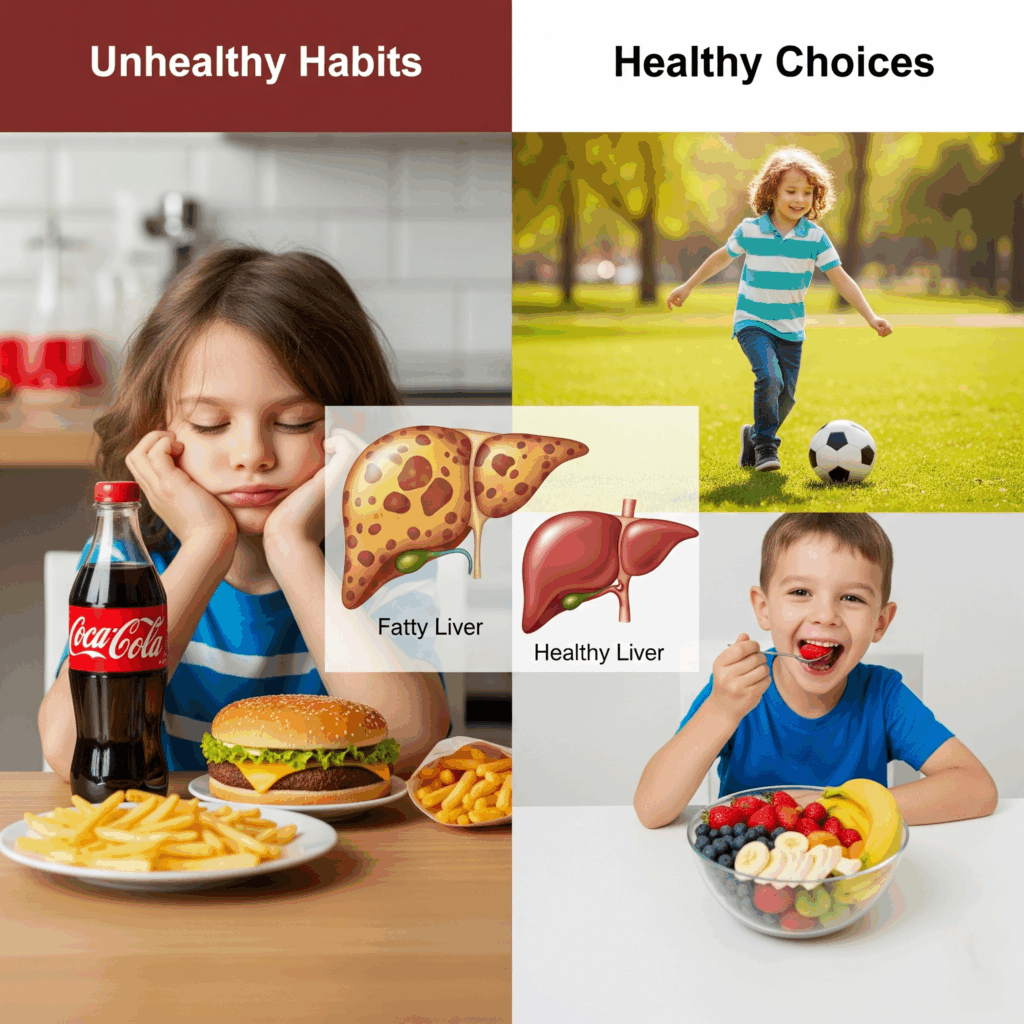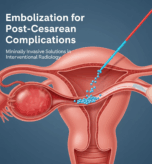Fatty Liver in Children: Causes, Symptoms to Watch Out For, and Prevention Tips
Introduction
Childhood health is every parent’s priority, but with today’s fast-paced lifestyle and increasing reliance on junk food, children are facing health problems that were once considered “adult issues.” One such growing concern is fatty liver in children. Also known as pediatric fatty liver disease or non-alcoholic fatty liver disease (NAFLD), this condition occurs when excess fat builds up in the liver, leading to inflammation and potential long-term damage.
What makes it alarming is that many children may not show clear symptoms in the early stages. This makes awareness, timely diagnosis, and lifestyle changes crucial for prevention and management.

Causes of Fatty Liver in Children
Several factors contribute to fatty liver in children. Some of the most common include:
- Unhealthy Diet
Diets high in fried foods, sugary drinks, processed snacks, and fast food increase fat accumulation in the liver. - Childhood Obesity
Overweight and obese children are at higher risk. Studies show a direct link between obesity and pediatric fatty liver disease. - Sedentary Lifestyle
Lack of regular physical activity leads to poor metabolism, weight gain, and higher fat storage in the liver. - Genetic Factors
Children with a family history of diabetes, obesity, or liver problems may be more prone. - Insulin Resistance
When the body doesn’t use insulin properly, fat tends to deposit in the liver.
Symptoms to Watch Out For
Fatty liver in children often progresses silently. However, some warning signs parents should be mindful of include:
- Persistent fatigue or lack of energy
- Unexplained weight gain, especially around the abdomen
- Pain or discomfort in the upper right side of the abdomen
- Dark patches on the skin (especially around the neck and underarms – linked with insulin resistance)
- Poor appetite or irregular digestion
- Elevated liver enzymes in blood tests (discovered during routine check-ups)
Since these symptoms can be vague, regular pediatric check-ups are essential.
Potential Risks if Left Untreated
If not managed early, fatty liver can progress to more serious conditions such as:
- Non-alcoholic steatohepatitis (NASH): Inflammation and liver damage
- Liver fibrosis or cirrhosis: Scarring that affects liver function
- Increased risk of diabetes and heart disease later in life
This highlights why early prevention is critical.
Prevention Tips for Parents
The good news is that fatty liver in children can be prevented — and even reversed in its early stages — with lifestyle changes.
- Healthy Diet Choices
- Replace sugary drinks with water or fresh fruit juices.
- Encourage home-cooked meals with vegetables, fruits, whole grains, and lean proteins.
- Limit junk food, fried snacks, and processed items.
- Encourage Daily Physical Activity
- Children should get at least 60 minutes of moderate-to-vigorous activity daily.
- Activities like cycling, swimming, running, or sports help maintain a healthy weight.
- Regular Health Check-Ups
- Routine medical visits help detect liver-related issues early.
- Liver function tests can provide early warning signs.
- Maintain Healthy Weight
- Guide your child towards balanced meals and portion control.
- Avoid unnecessary dieting — focus on sustainable healthy habits instead.
- Create Healthy Habits at Home
- Parents should lead by example. If the whole family practices healthy eating and regular exercise, children are more likely to follow.
Conclusion
Fatty liver in children is a growing health concern, but with awareness and the right steps, it can be managed and prevented. Early lifestyle changes — including a balanced diet, regular exercise, and routine check-ups — can go a long way in protecting your child’s liver health.
we believe prevention starts with education and healthy habits. If you’re concerned about your child’s liver health or need guidance on diet and lifestyle, don’t hesitate to consult our specialists. Together, we can ensure a healthier, brighter future for your children.






